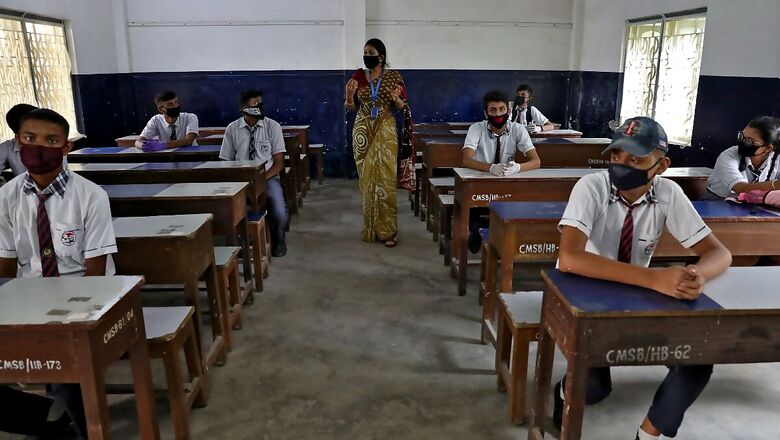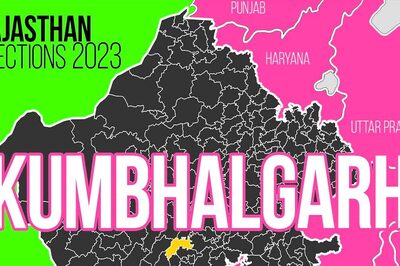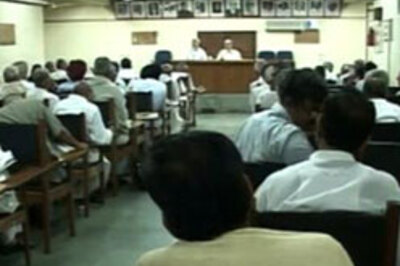
views
Affirmative action for OBCs has helped to bridge the education gap by about 40%. It has incentivised the social minority group to stay in school longer, according to a new study – “Does Affirmative Action Incentivize Schooling? Evidence from India” published in The Review Economics and Statistics Weekly.
It suggests OBC students attain 0.8 additional years of education where affirmative action policies are in place, further confirming what the activists and the advocates of the policy have been saying. The evidence from India reveals underrepresented students stay in school for longer under the affirmative policy.
The author Gaurav Khanna, assistant professor of economics at UC San Diego’s School of Global Policy and Strategy studied the education outcomes before and after the policy was implemented in 1994.
While non-OBCs were still more likely to pursue more education, wide-scale affirmative action helped bridge the education gap by about 40% over a decade and a half. We know the direct effects of affirmative action and that it impacts college admissions. But the new evidence from India reflected “affirmative action has indirect benefits on the behaviour of underrepresented high school students. OBCs tend to stay in school longer because they know higher education is within reach.”
Different from the past researches
The finding is important for policymakers as Khanna said, “In the policy space, people have made claims that affirmative action lowers standards and the learning gains for underrepresented students who will ‘no longer work as hard’. My research suggests the opposite.” By making these seats attainable to low caste students (via affirmative action) actually encourages them to work harder and finish school.
Comparing his study, and talking about the difference in the way previous papers have studied the affirmative actions and OBCs, Khanna said, “The other research on OBCs and affirmative action examines what happens to students in college (or after college). It shows that affirmative action policies do a good job of ensuring OBC students are admitted into colleges, these students do well in college, and as a result earn more in jobs thereafter.”
On the other hand, his research takes “it a step further by studying how students respond before they are even old enough to join college. That is, before they directly become eligible. So unlike other research, my work can study the encouragement or motivational consequences of affirmative action policies on students who are still in school,” he added.
For this research Khanna compiled a number of data sources, including the Indian National Sample Survey (NSS) to map the trends in educational attainment by birth cohort and social group. Those born before 1976 would be over the age of 18 by the time the federal government policy was implemented in 1994. Thus, he looked at education levels of minority students in this cohort and compared them to education levels attained by OBCs before the affirmative action policies were enacted.
While affirmative action is a federal law in India, each state chooses a different level of application. Khanna finds that states that had a higher intensity of affirmative action, in terms of the fraction of seats reserved per OBC, saw a sharper increase in the educational attainment of minorities.
The author found that between 2000 and 2005, the fraction of OBCs in public sector jobs rose from 22% to 27%.For members of the minority group who do not get government jobs, “an increase in education may translate into benefits (like better health) and high wages as the estimated returns to education in developing countries are between “6%” and “13%.”
The significance of the study
India’s federal government instituted affirmative action policies in 1993, reserving 27% of government jobs, which are highly sought after, for Other Backward Classes (OBCs) - a collective term used by the country’s government to classify castes which are educationally or socially disadvantaged. In 2006, reservations in colleges were implemented. Despite the constitutional assurance in the country the OBCs are struggling for the implementation of quota in the state run medical colleges. The Madras High Court ruling directed the centre and the states to bring OBC quota under the purview of All India Quota in medical institutes run by the states.
In this backdrop, Khanna said, “My research suggests that as and when OBCs were denied such opportunities it may seek to discourage them from trying to apply for such seats, and as a result, from trying to do well enough to be eligible for such seats. This discouragement effect can worsen their educational outcomes even at earlier levels of schooling as they may start getting discouraged at an early age.”
Journalist Tejas Harad, formerly a fellow at Reuters Institute for the Study of Journalism, said that the study only confirms the affirmative action incentivizes OBCs to stay in school longer in response to changes in future prospects. “There is resistance to OBC quota among the upper caste people, and that is why medical quota was not implemented. There have been petitions to make medical education more represented. The government got in action only after that,” he said.
Harad added, “The upper caste and government do not take OBC quota seriously as they feel the group is not actually backward and quota might only help the upper class of OBCs. This helps OBCs because prejudice is high and resource allocation is skewed in favour of the upper caste.”
It is indeed imperative to lower educational inequalities — and possibly wealth inequalities — “In light of these results, policymakers should consider the externalities of affirmative action policies when designing them,” said Khanna, and regarding the “EWS reservations” it is expected that “the step should have similar encouragement effects on low-income general category students. Now students from poor families may work harder and finish school knowing that it is easier to get into college.”




















Comments
0 comment